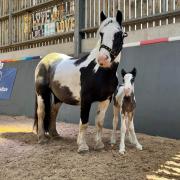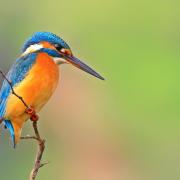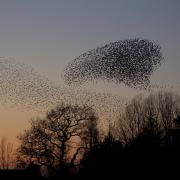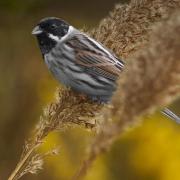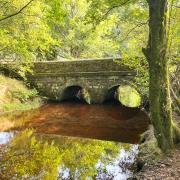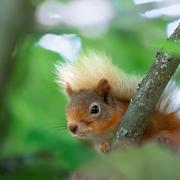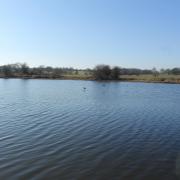While reindeers are working overtime, Christmas is a good time to look out for their Lancashire cousins, writes Lancashire Wildlife Trust’s Alan Wright

Christmas is a time when deer begin to get a good press for pulling Santa’s sleigh and couriering presents to millions of children. For the rest of the year, deer are not thought of fondly by land owners and many conservationists because of the damage they can do to woodland.
Deer have a sweet tooth for saplings, which means they can devastate a couple of year’s growth in a wood which then has a knock-on effect for plants, insects, birds and other mammals.
When we get stories about deer being culled – or ‘managed’ – there is an outcry. The point is that these beasts have no natural predators and, at times, the woodlands do get a little crowded.
In the main, spotting deer in the wild around Lancashire is a jaw-dropping moment which most people never get tired of experiencing.

The edges of the West Pennine Moors, around Chorley and Blackburn, are definitely prime deer-spotting territory. In January I saw roe deer nearly every day for a fortnight on my morning dog walk.
Winter is a great time for deer spotting. The animals come down from the hills to seek food and, with little foliage on the trees and bushes, you get a clear view through woodland.
Of course, sometimes the roe deer around Lancashire are actually spotting humans too. It is almost like a ‘stare-me-out’ competition once the deer feel they are at a safe distance. They will eye you for a good few minutes before continuing to eat their meal, realising that you are no threat.
Another reason why roe deer are harder to see in summer is because they will be fairly solitary in the warmer months. They seek the warmth of a small group in winter making them more obvious.
Roe are our most common – medium-sized with short antlers and no tail. However they do have a white rump at the back end of brown bodies which are reddish in summer and almost dark grey in winter.
Males have short, six-pointed antlers, which begin to grow in November, shedding the velvet from them in the spring. If you see a deer, it is likely to be a roe deer. Early mornings and dusk are the best times to spot them. If you are lucky you will see them clear a fence in a single bound often from what seems a standing start.
Often in woodlands you may hear a barking sound, this may be a roe deer’s warning call and not someone out early with their dog. Obviously most people’s idea of a deer includes large, branch-like antlers, unlike the petite roe. Red deer are the favourites for this.
I have only seen one red deer in south Lancashire, but there have been plenty of sightings closer to the Pennines in the east of the county and there are certainly flocks of red deer in the north, towards Silverdale and the Lake District.
I was recently told of two red deer stags which have lived and bred in the Rossendale area for some time now. They are our largest mammals, russet brown in colour, with antlers increasing in size as they get older. They are used in the autumnal rut and can cause severe injuries.
If you are lucky enough to see a red deer fawn, it will be spotty for about three months – like a spotty youth.
Other deer becoming more common in the UK are sika and muntjac deer. Both introduced into parks decades ago, they are now spreading out into the North West. Sikas originate in Japan, muntjacs are from China.
The Wildlife Trust has had a report of a sika in a Salford garden, easily recognised because of its spots. Over the past two years a marauding gang of muntjacs has been munching their way through West Lancashire fields and woodland. These small, stocky deers have paid a couple of visits to the Wildlife Trust’s Mere Sands Wood reserve in Rufford.
Larger fallow deer have been spotted around Pennine areas of the region but they have rarely encroached. They vary in colour, most being a pale gingery-brown with white spots on the back, a black and white tail and a white rump patch outlined in black. Some animals are darker brown without any spots, and others are very pale, almost white.
We should all report our sightings of deer so that we can assess how healthy populations are and how many varieties are being seen locally.
Of course, if you see reindeer above your house on Christmas Eve, you may have had one eggnog too many!
If you want to get involved in watching and recording deer and other mammals you can join Merseyside and Lancashire Mammal Group at www.merseysidebiobank.org.uk
The Wildlife Trust for Lancashire is dedicated to the protection and promotion of the wildlife in Lancashire, seven boroughs of Greater Manchester and four of Merseyside, all lying north of the River Mersey. It manages around 40 nature reserves and 20 Local Nature Reserves covering acres of woodland, wetland, upland and meadow. The Trust has 27,000 members, and over 1,200 volunteers. To become a member go to the website at www.lancswt.org.uk or call 01772 324129.




